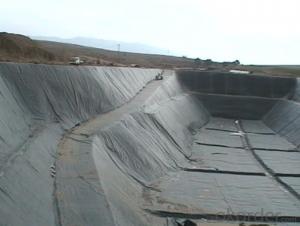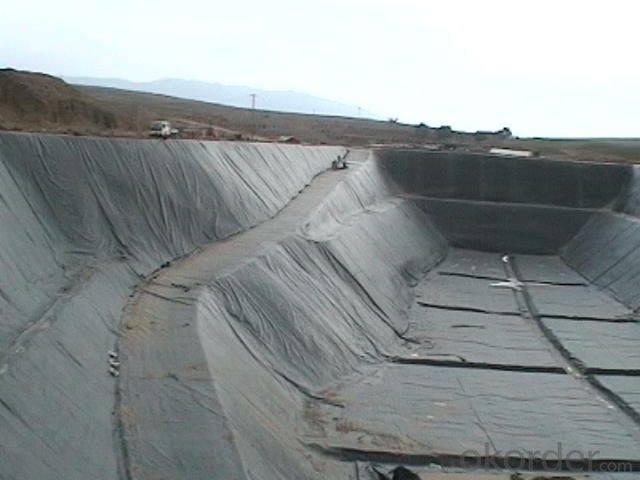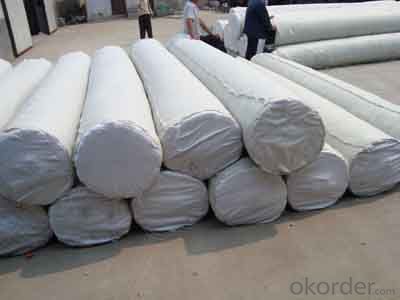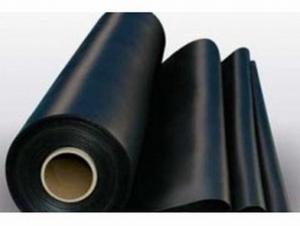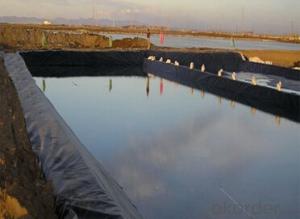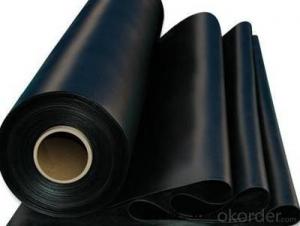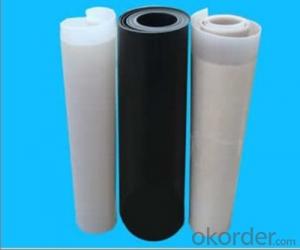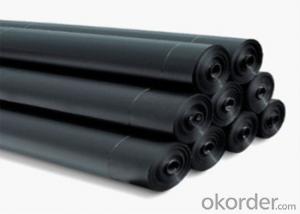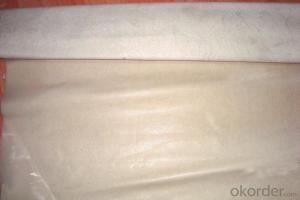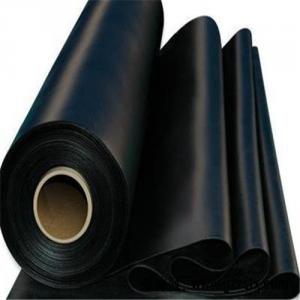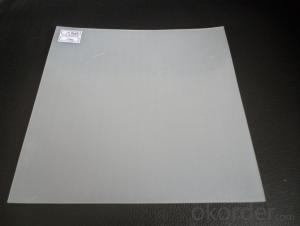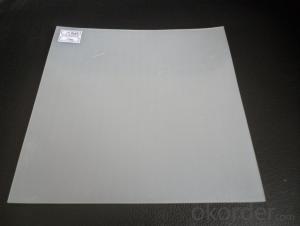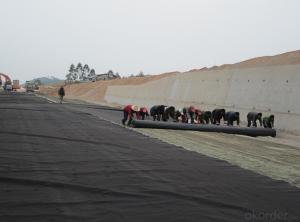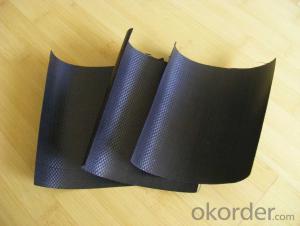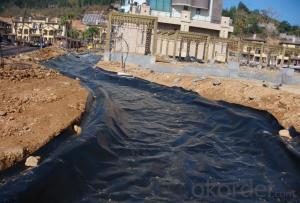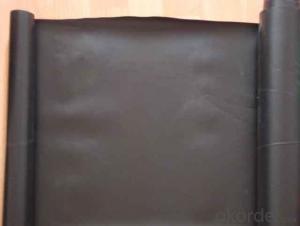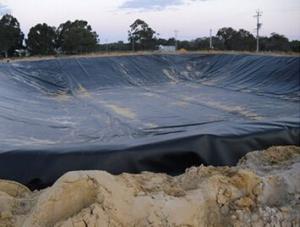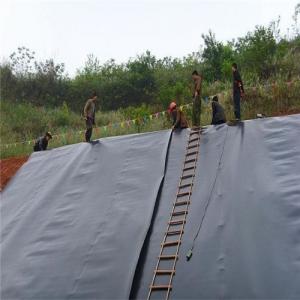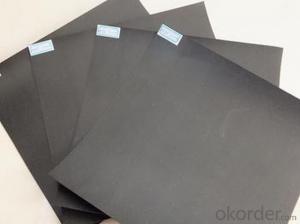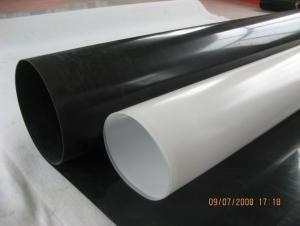HDPE Geomembrane for Landfill to Prevent the Waste Water
- Loading Port:
- Qingdao
- Payment Terms:
- TT OR LC
- Min Order Qty:
- 10000 m²
- Supply Capability:
- 500000 m²/month
OKorder Service Pledge
OKorder Financial Service
You Might Also Like
Structure of Hdpe Geomembrane for Landfill
Hdpe Geomembrane for Landfill are made from polyethylene polymer materials that blow molding,its main function is to prevent the liquid leakage and gas volatile.According to the production of raw materials can divide into HDPE geomembrane liner and LDPE geomembrane liner,etc.
Main Features of Hdpe Geomembrane for Landfill:
Complete variety of specifications of width and thickness. Thickness: 0.08-2mm / Width: 2-16m .
Excellent environmental stress resistant cracking performance.
Excellent performance of chemical erosion resistance.
Big scope of application temperature and long service life .
Applied in landfill waste site, sewage and filth treatment site, tailings depot and underground construction project
Fish Farm Pond Liner Images
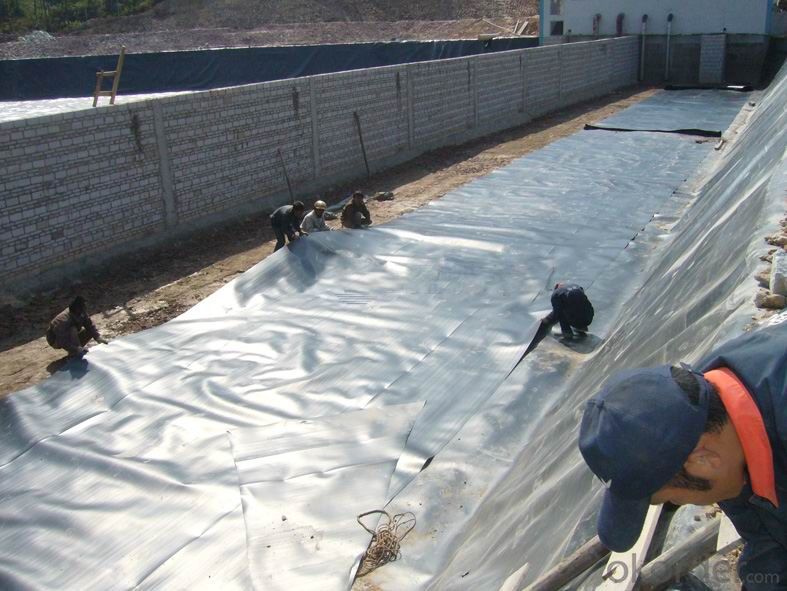
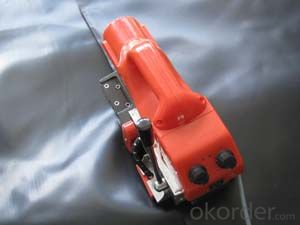
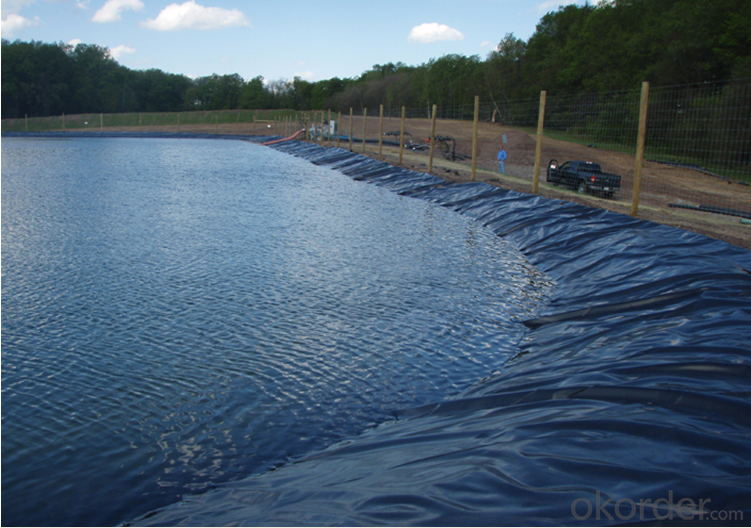
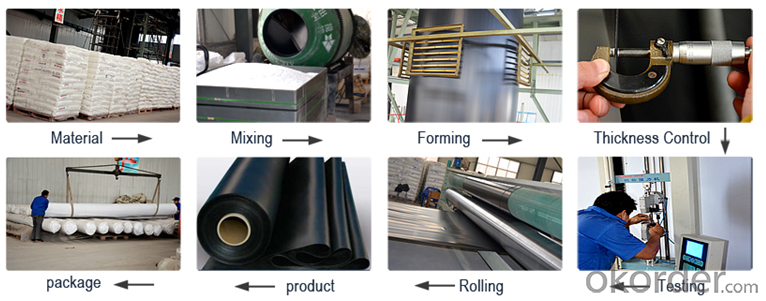
Hdpe Geomembrane for Landfill Specification :
No. | Item | Test Value | |||||||
0.75mm | 1.0 mm | 1.25 mm | 1.5 mm | 1.8mm | 2.0mm | 2.5 mm | 3.0mm | ||
1 | Minimum Density(g/cm³) | 0.94 | |||||||
2 | Strength at yield,N/mm | 11 | 15 | 18 | 23 | 27 | 30 | 38 | 45 |
3 | Strength at break ,N/mm | 21 | 28 | 33 | 43 | 51 | 57 | 71 | 85 |
4 | Elongation at yield,% | 13 | |||||||
5 | Elongation at break,% | 700min | |||||||
6 | Tear Resistance N | 93 | 125 | 156 | 187 | 219 | 249 | 311 | 373 |
7 | Puncture Resistance N | 263 | 352 | 440 | 530 | 618 | 703 | 881 | 1059 |
8 | Stress Crack Resistance, hrs | 400 | |||||||
9 | Carbon Black Content, % | 2.0-3.0 | |||||||
Carbon Black Dispersion | 1 or 2 | ||||||||
10 | Standard OTI Min | 100 | |||||||
High Pressure OTI Min | 400 | ||||||||
11 | Impact Cold Crack at -70°C | Pass | |||||||
12 | Water vapor permeability (g.cm/cm2 .s.Pa) | ≤1.0×10-13 | |||||||
13 | Dimensional Stability (%) | ±2 | |||||||
FAQ:
1. How about the delivery time?
Two weeks upon receipt of down payment.
2. What kind of payments do we accepted?
T/T, L/C, WesternUnion, MoneyGram.
3. What's are the MOQ?
Normally the MOQ is 5000 SQM in theory.
And we can provide you free samples for quality inspection.
4. Do you charge for the samples?
Accordeing to our company policy, the samples are freee, we only charge the freight fee. And we will return the freight fee in your second order.
5. Can you produce the product according to customers' requirements?
Sure, we are professional manufacturer, OEM and ODM are both welcome
- Q: Which one is better, electric heating film and carbon crystal?
- First of all the inside of electric heat mold is all wire. We are taught in high school physics that electromagnetic radiation is powerful if there are a lot of electric circle. Can you feel safe on thinking that your house is surrounded by electromagnetic radiation,
- Q: What should pay attention to in the construction of geomembrane?
- The best method is using buried laying. During construction, first of all, level out the base surface with smaller sand or clay, and then pave geomembrane. Don't stretch geomembrane too tightly, both ends embedded in the soil section is corrugated and finally pave a layer of about 10cm transition layer with fine sand or clay on paved geomembrane. Block 20-30cm stone (or concrete precast block) as scour prevention layer. It is better to avoid the stones to hit on geomembrane, and it is better to carry on the construction of the protective layer while pavement of geomembrane.
- Q: How do geomembranes contribute to erosion protection in coastal areas?
- Geomembranes contribute to erosion protection in coastal areas by providing a barrier between the soil or sand and the forces of waves, tides, and currents. They help to prevent erosion by stabilizing the shoreline, reducing the impact of wave energy, and preventing the loss of sediment from the beach or dune system. The impermeable nature of geomembranes also helps to control water flow and prevent the infiltration of water into the soil, which can further contribute to erosion. Overall, geomembranes act as a protective layer, minimizing erosion and preserving the natural coastal environment.
- Q: which kind of imitation wood film is better?
- good imitation wood film materials include: PET, PVC, acrylic. characteristic: it can be lettering, bar cutting, photo printing, screen printing 1, light emitting film made by PVC materials can be photo printing, PET emitting film can be lettering, bar cutting, acrylic light emitting film is suitable for screen printing. 2, it has some salt water resistance, detergent resistance (it can be cleaned with detergent). 3, it has excellent heat resistance, cold resistance, suitable for the environment of -20 ~ 50 ℃. 4, the light emitting film has good phisical and mechanical properties. 5, the light emitting film is a sticky, it can stick to the general surface.
- Q: What are the requirements for geomembranes used in heap leach pads?
- The requirements for geomembranes used in heap leach pads include a high level of chemical resistance to withstand the aggressive chemicals used in the leaching process, excellent puncture resistance to prevent leaks, low permeability to minimize fluid migration, and UV resistance to withstand prolonged exposure to sunlight. Additionally, the geomembranes should have good tensile strength and flexibility to accommodate any subsidence or settlement in the heap leach pad.
- Q: Which is better, domestic or imported geomembrane?
- Although China is now also developing geomembrane, but also it is just at the beginning. Foreign environmental protection course is earlier and more developed than China's. So we have to admit that foreign HDPE geomembrane is more quality than domestic geomembrane. Although domestic geomembrane is cheaper, most of the domestic geomembrane use reused materials, so service life is greatly reduced, which is known to all. While imported HDPE geomembrane, such as geomembrane produced in Canadian Solmax International Inc. do not use reused materials, so the quality is absolutely guaranteed. Moreover, Solmax International Inc. is the world's largest and most professional supplier of HDPE geomembrane. So I think imported geomembrane has higher cost performance ratio!
- Q: Are geomembranes resistant to rodent damage?
- Yes, geomembranes are generally resistant to rodent damage. They are designed to be durable and have low susceptibility to punctures or tears caused by rodents. However, it is important to note that no material is completely immune to rodent damage, and in certain cases, rodents may still be able to cause some level of damage to geomembranes.
- Q: How do geomembranes help in preventing seepage?
- Geomembranes help in preventing seepage by acting as a barrier or liner that is impermeable to water and other fluids. They are designed to be highly resistant to punctures, tears, and chemical degradation, making them effective in containing liquids and preventing them from seeping into or out of a specific area. By installing geomembranes in various applications such as landfills, ponds, reservoirs, or mining sites, they help to ensure the containment and protection of the surrounding environment from potential leakage or contamination.
- Q: Can geomembranes be installed on slopes?
- Yes, geomembranes can be installed on slopes. They are often used as a barrier or liner to prevent water seepage or soil erosion on slopes. The installation process may require additional measures to ensure proper anchoring and stability on the inclined surface.
- Q: Can geomembranes be used for landfill capping systems?
- Yes, geomembranes can be used for landfill capping systems. Geomembranes are impermeable liners made of synthetic materials that can effectively prevent the leakage of liquids and gases from landfills. They are commonly used as a part of landfill capping systems to create a barrier between the waste and the environment, minimizing the risk of contamination and protecting the underlying soil and groundwater.
Send your message to us
HDPE Geomembrane for Landfill to Prevent the Waste Water
- Loading Port:
- Qingdao
- Payment Terms:
- TT OR LC
- Min Order Qty:
- 10000 m²
- Supply Capability:
- 500000 m²/month
OKorder Service Pledge
OKorder Financial Service
Similar products
Hot products
Hot Searches
Related keywords
